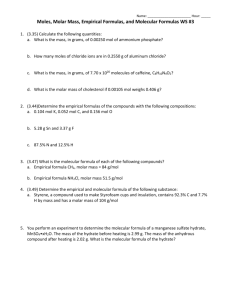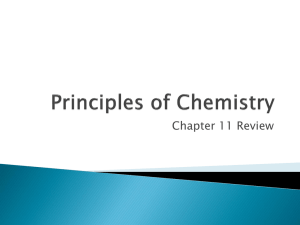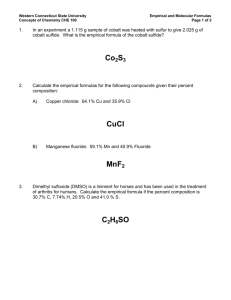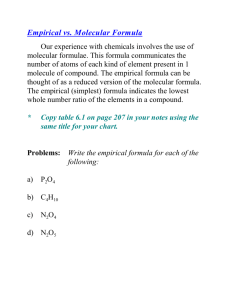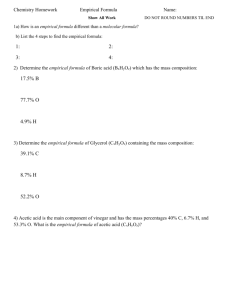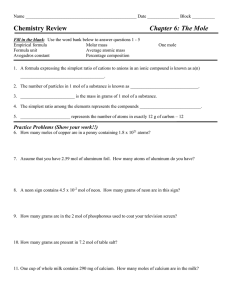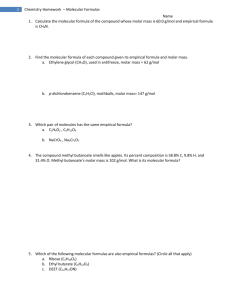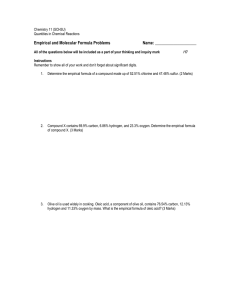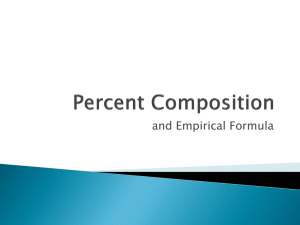Chemistry Review: Formulas, Composition, and Hydrates
advertisement
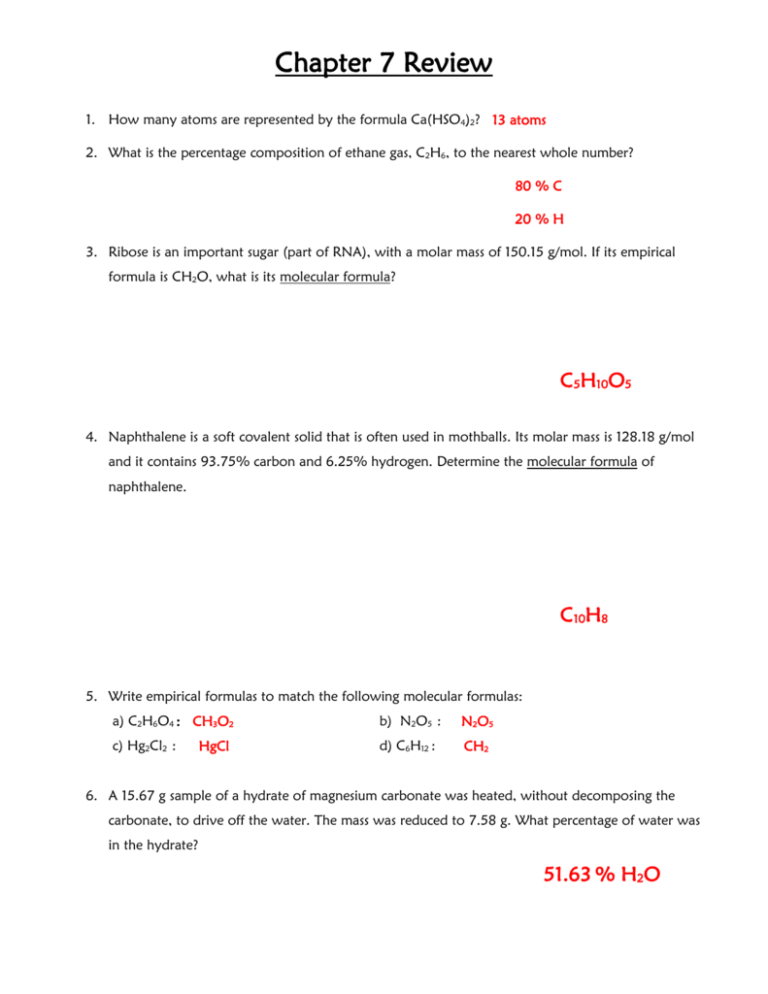
Chapter 7 Review 1. How many atoms are represented by the formula Ca(HSO4)2? 13 atoms 2. What is the percentage composition of ethane gas, C2H6, to the nearest whole number? 80 % C 20 % H 3. Ribose is an important sugar (part of RNA), with a molar mass of 150.15 g/mol. If its empirical formula is CH2O, what is its molecular formula? C5H10O5 4. Naphthalene is a soft covalent solid that is often used in mothballs. Its molar mass is 128.18 g/mol and it contains 93.75% carbon and 6.25% hydrogen. Determine the molecular formula of naphthalene. C10H8 5. Write empirical formulas to match the following molecular formulas: a) C2H6O4 : CH3O2 b) N2O5 : N2O5 c) Hg2Cl2 : d) C6H12 : CH2 HgCl 6. A 15.67 g sample of a hydrate of magnesium carbonate was heated, without decomposing the carbonate, to drive off the water. The mass was reduced to 7.58 g. What percentage of water was in the hydrate? 51.63 % H2O 7. A hydrate of MgSO4·7 H20 has a mass of 22 g before heating. How much anhydrous salt remains? 10.74 grams MgSO4 8. A certain hydrocarbon has an empirical formula of CH2 and a molar mass of 56.12 g/mol. What is its molecular formula? C 4H 8 9. A certain ionic compound is found to contain 1 mol of sodium, 1 mol of sulfur, and 1.5 mol of oxygen. What is its empirical formula? Na2S2O3 10. Gas X is found to be 24.0% carbon and 76% fluorine by mass. a) Determine the empirical formula of gas X CF2 b) Given that the molar mass of gas X is 200.04 g/mol, determine its molecular formula. C 4F 8 11. A compound is found to contain 43.2% copper, 24.1% chlorine, and 32.7% oxygen by mass. a) Determine its empirical formula. CuClO3 b) What is the correct Stock name of the compound in part a? Copper (i) Chlorate
